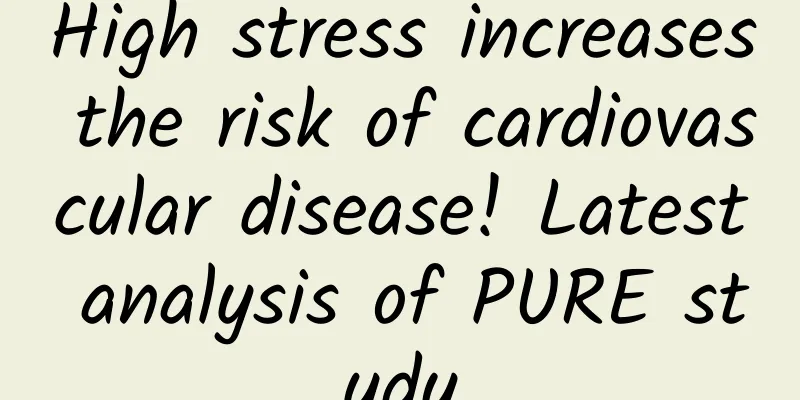High stress increases the risk of cardiovascular disease! Latest analysis of PURE study

|
A recent analysis of the Prospective Urban and Rural Epidemiology (PURE) study found that the risk of cardiovascular disease events is significantly increased under severe stress. The study included 118,000 residents in 21 countries, including five low-income countries, 12 middle-income countries and four high-income countries. In the study, residents under heavy stress were slightly younger and more likely to have risk factors such as smoking or abdominal obesity, which are more common in high-income countries. The median follow-up was 10 years, during which 5934 cardiovascular events occurred, including myocardial infarction, stroke, or heart failure. After adjustment, the researchers found that severely stressed residents had a 22% increased risk of cardiovascular events and a 30% increased risk of stroke, while mildly and moderately stressed residents had no increased risk. Previous studies by the same research group found that people who perceived themselves to be under great stress had a 1.45 times higher risk of acute myocardial infarction, while those who were under long-term stress at work had a 2.17 times higher risk of myocardial infarction. Lin Shuguang and others also pointed out in their review article in this journal that negative life events are clearly related to cardiovascular disease. Negative life events stimulate emotions and activate the sympathetic nervous system, which leads to increased heart rate, increased blood pressure, and vasoconstriction, causing an imbalance between oxygen demand and supply in the coronary arteries and heart that already have lesions, leading to myocardial infarction. The study divided the stress felt by residents in the past year into three aspects: psychosocial stress, life events, and economic stress. Psychosocial stress is defined as irritability, anxiety, or difficulty sleeping due to work or family conditions. Unemployment, retirement, business failure, divorce, death of spouse/close relative, or major illness are life events; the level of economic stress is obtained by investigating whether financial stress has been felt in the past 12 months; the overall stress level ranges from zero (no stress) to level three (severe stress). Among them, 7.3% reported severe stress, 18.4% moderate stress, and 29.4% mild stress. Source: China Circulation Magazine |
<<: What are the main gases that cause acid rain? How to control acid rain
>>: Is talking less a sign of autism?
Recommend
What is the reason for the yellowing of the leaves of the iron tree? How to repair the yellowing leaves of the iron tree
Speaking of cycads, I believe everyone is familia...
What is the reason for reddish menstruation?
Whether a woman's menstruation is normal can ...
Is it good to take vitamin C during pregnancy?
Pregnancy is divided into early pregnancy, mid-pr...
What are the methods for older pregnant women to preserve the fetus? What are the precautions for preserving the fetus?
Now many people are starting to want a second chi...
What are the 10 types of foods rich in probiotics? Does room temperature yogurt contain probiotics?
As people are choosing healthier foods, I believe...
I haven't had my period for more than a year. Is it normal to have my period again after stopping for a year?
Women start to menstruate at the age of twelve or...
What blood-activating foods are taboo for pregnant women
Doctors recommend that pregnant women should not ...
China VR Industry Survey: The Wild Age of Hardware and Content
This is a difficult search process. The reporter ...
Why did the leucorrhea suddenly disappear?
Everyone has heard of abnormal leucorrhea, or it ...
What medicine should I take if my menstruation is always irregular?
There are many reasons that lead to irregular men...
What to do if you have trouble sleeping during the confinement period
Mothers look forward to the birth of their baby f...
How can I get pregnant faster?
Preparing for pregnancy is not a simple technical...
Does laser freckle removal have any side effects? Let you know the truth
Facts have proved that laser spot removal is inde...
How to treat unruptured ovarian follicles
Unruptured follicles should be taken seriously. W...
Can I get the nine-valent vaccine after getting the four-valent vaccine?
HPV vaccine, also known as cervical cancer vaccin...









